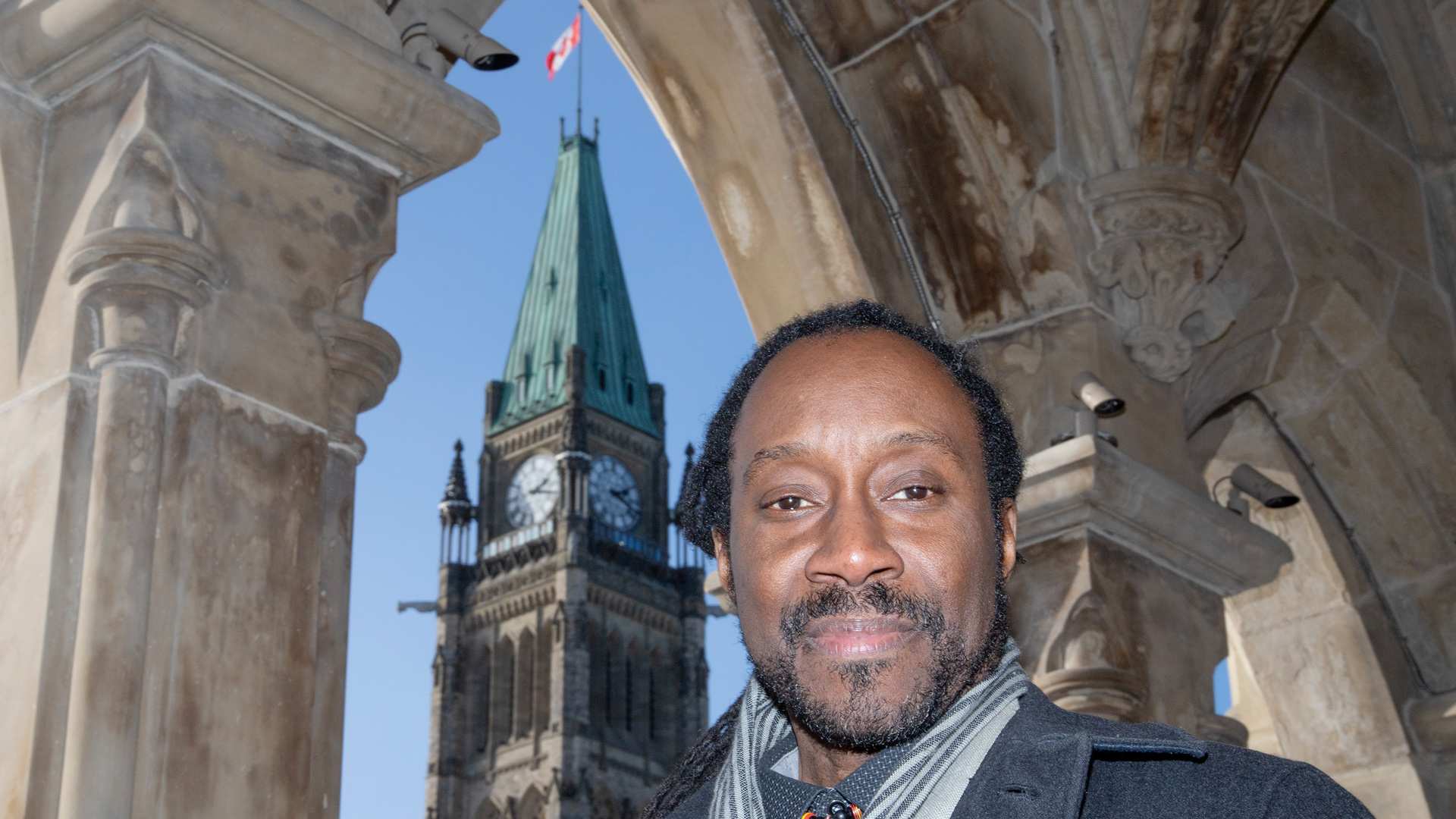
(Version française disponible ici)
For years, activist Richard Sharpe warned every top bureaucrat he met that Black public service workers would take the federal government to court if it failed to address anti-Black racism in their workplace.
The former federal bureaucrat could feel discontent snowballing. Despite decades of employment equity law, thousands of Black public servants felt no further ahead in their careers.
The government countered that departments were exceeding their targets for workers called “visible minorities” under the Employment Equity Act of 1986, which placed all employees who aren’t white/Caucasian or Indigenous in that single category. The plaintiffs say this approach hides the particular disparities and disadvantages Black people face on the job.
Discontent eventually built to the point that a group of Black public servants wanted compensation, not just change, and filed a $2.5-billion class action lawsuit for lost salaries, pensions and other damages. The 12 plaintiffs are now locked in a three-year legal battle with the government.
Their lawsuit accuses Ottawa of systematically leaving Black people out of the running for jobs and promotions, dating back to the 1970s. They say government hiring and staffing practices steered them to lower-level jobs, paid them less and denied them promotions and opportunities because of their race.
The Public Service Commission, the government’s staffing watchdog, agrees in part. It evaluated the staffing system and found that Black people fared the worst among groups within the visible minority category during the recruitment process.
Data from a PSC study found that Black employees had a lower chance of promotion compared to non-Blacks between 2005 and 2018.
Federal government still fighting
However, the government, which has settled with other employee groups that also sued over discrimination issues, has spent almost $8 million fighting this lawsuit. It argues that under the federal labour regime, the issues raised should be resolved by a union grievance process or complaints to the Canadian Human Rights Commission, instead of the courts.
“There’s even racism in the way that the government is dealing with racism against Black Canadians. There’s no other group that has gone through what we’re going through right now,” says Courtney Betty, lead lawyer for the plaintiffs.
The dispute is complicated by many factors. Data is a big one.
Take the Justice Department. In court documents filed for the lawsuit, it admitted “an inadvertent error resulting in some non-visible minority employees being counted as visible minorities” for years.
Part of that problem is that all government departments rely on individual employees to self-identify their gender and race.
The catch-all category of “visible minorities” is also a term used only in Canada. Critics call it nebulous at best, derogatory and racist at worst. Ottawa has been asked three times since 2007 by the United Nations to stop using it.
In December, the plaintiffs scored what Nicholas Marcus Thompson, executive director of the Black Class Action Secretariat, calls a “major win” when the long-awaited report of the federal task force on reforming the Employment Equity Act recommended separate categories be created for Blacks and LGBTQ public servants and all other workers in federally regulated industries. The government has accepted that idea.

The report serves as a sweeping indictment of staffing policies and practices in federally regulated industries, concluding that Canada “has not achieved employment equity” and saying it was startled at “how unrepresentative some employment remains” across the country.
“Along the way, something happened. For some, employment equity just got outdated,” the report says.
“The terminology did not keep up with the times and was not inclusive enough. The data collection challenges began to weigh down the process with outdated, less than reliable information. Processes became bureaucratized. Boxes got checked, but were things really getting better?”
Filling out forms instead of achieving equity
The report found employers can comply with the law simply by filing reports, meeting targets and “checking off boxes” without actually making a workforce more diverse. As one expert told the task force: “The fact that employers can meet compliance requirements without ever employing a Black person is problematic.”
The report’s 187 recommendations, if implemented, would be a massive transformation in how the public service manages its workforce. Many are changes the plaintiffs seek.
However, whether the government and public service have the stomach for that kind of radical change is up in the air.
Labour Minister Seamus O’Regan says the government is committed to modernizing the Employment Equity Act.
He immediately endorsed the task force’s recommendations that Black and LGBTQ workers become separate employment equity groups under the law. Similarly, he supported proposals that the terms “Aboriginal” should be replaced by “Indigenous” and “visible minorities” by “racialized people.”
Thompson calls O’Regan’s acceptance of the idea a “monumental step for equity and inclusion” in Canada.
A big question is whether the report will help lead to a legal settlement. The long-awaited hearing about certification of the class action lawsuit is scheduled for May. Settlement is still a possibility, but those involved speculate that will not happen before the certification hearing or the next federal election.
O’Regan says he will be in a better position to discuss the issue after the government consults on the task force’s recommendations.
“I don’t want to prejudice anything other than to say that the recommendations have now come forward and they are extensive. Let’s get through them and figure out how we will translate (them) to legislative change. I think then we’ll be in a better position to answer some of those questions.”
The federal government – the country’s largest employer – has been the target of several class action lawsuits over workplace issues, including from members of the RCMP, veterans, the military and Indigenous workers. Women won a historic $3-billion pay equity settlement in 1999.
As one long-time Black activist said: “Every disadvantaged group in the public service has come forward to fight for their rights so it was only a matter of time before Blacks figured it out and litigated. And here we are.”
Sharpe is not among the 2,000 claimants who have joined the legal battle. He was a co-founder of the Federal Black Employee Caucus (FBEC), the first group dedicated to fighting for equity for Black public servants. He is now director of the Black Equity Branch of the Ontario public service.
He knocked on doors, talked to departments, gathered and analyzed data to get Black equity rights on the agenda. He warned then-Privy Council clerk Ian Shugart during an August 2019 meeting that “a whole bunch of angry Black people will be coming to get their money” if meaningful steps weren’t taken.
The class action suit was filed in December 2020 – months after the killing of George Floyd in Minneapolis “galvanized the entire planet to support Black life like I had never seen,” says Sharpe.
In January 2021, Shugart kicked off the biggest effort yet within the public service to root out anti-Black racism and discrimination with his call to action on anti-racism and inclusion in the public service.
“When you look at the data and you see the rates of promotion, advancement and so on, at one point you realize that, yes, this is systemic. This is a deep-seated problem,” Shugart told a Senate committee in May 2023, after he had left the Privy Council Office and been named to the Senate.
The chronic problem of bad data
The reliability of data – including how the government collected and analyzed it, and how it identified and counted “visible minorities” under the act – will be a key battleground in getting class-action status confirmed for the lawsuit or negotiating any settlement with Ottawa.
Lawyers for the plaintiffs are relying on statistical evidence and analysis built on the government’s data and have made more than 100 requests to different departments for records.
For years, the government claimed it did not have disaggregated data about its employees, particularly Black and other racialized employees because they were included in the overall count for visible minorities.
But access requests show many departments did collect such data, even though they didn’t start releasing disaggregated data until 2021, after the class-action lawsuit was filed.

Dr. Martin Nicholas, a data specialist and equity adviser, developed a new methodology using Treasury Board Secretariat’s public and web-scraped data to examine groups within the visible-minority category between 2017 and 2021.
He found Black public servants faced “career stagnation and systemic disadvantage” and were over-represented in the lowest-paying positions and under-represented in the highest-paying jobs.
Earlier this year, auditor general Karen Hogan found departments are still in the dark about how racialized employees are faring compared with other workers.
She concluded that simply meeting visible-minority staffing targets isn’t enough. The six departments she investigated still aren’t digging into data specific to racialized workers on promotions, performance ratings, tenure, mobility, recruitment and retention to identify any biases or disadvantages.
The effect of lumping together “visible minorities”
The Act requires the public-service workforce to reflect the population of Canada. That means the government must hire the Act’s four designated groups – women, Aboriginal people, people with disabilities and visible minorities – in proportion to their share of the overall Canadian labour force.
As long as departments met the visible minority targets, it didn’t matter whether they hired Black people, or people of Chinese, South Asian, Arab, Latin American, Filipino or other racialized descents.
There is also a longstanding methodology debate over the benchmark used to track the representation of visible minorities in the public service. The public-service approach excludes permanent residents and refugees. It also tracks the jobs that people have rather than those for which they are qualified.
The result is departments reporting to Parliament that they are meeting and exceeding representation targets when in fact they are significantly lagging behind, says Gérard Étienne, a former senior bureaucrat and diversity consultant.
“The sense they have been giving Parliament, that we are closing the gap, is one of the biggest lies perpetrated to Parliament and to Canadians because, if anything, the gap is getting wider,” says Étienne.
What new disaggregated data tells us about federal public service diversity
However, the lawsuit has already thrown the spotlight on discrimination and led to some changes demanded by the plaintiffs.
Jasminka Kalajdzic, director of the Class Action Clinic at the University of Windsor, says the mere pursuit of the lawsuit has already led to more changes than what a public servant could ever achieve with a grievance.
For example, Treasury Board is working on a more accurate self-identification process and centralizing employment equity data collection and reporting. As well, many departments have created anti-racism secretariats.
The government committed to a Black justice strategy and set aside $46 million in funding for a Black mental-health plan, although efforts to get that up and running have been mired in controversy.
The government recently announced a new panel to develop a “restorative engagement” program to address discrimination.
There has also been a flurry of promotions. In August 2022, Caroline Xavier became the first Black deputy minister when she was appointed chief* of Communications Security Establishment – 33 years after Ontario appointed its first Black deputy minister.
The Black Executives Network, established in July 2020, delivered its first report in June 2023, which noted “tremendous progress” in building a Black executive community over the past three years. The number of Black executives in the federal public service has grown to 168 today from 68 in 2016, with four deputy ministers and 15 assistant deputy ministers and a few dozen directors-general.
That’s still only about 2.3 per cent of the executives in the core public service, while Black people account for about 4.2 per cent of all public-service employees.
“This (issue) is so much bigger than the Black class action,” says Courtney Betty, the plaintiffs’ lead lawyer. “This is reflection of Canadian society. This is who we are. And for many Black individuals, that’s what they feel. It’s not a reality for any other Canadian. But for Black Canadians, it is a reality.”
* Correction: An earlier version of this article referred to Caroline Xavier as the president of the Communications Security Establishment. The correct title is chief.









